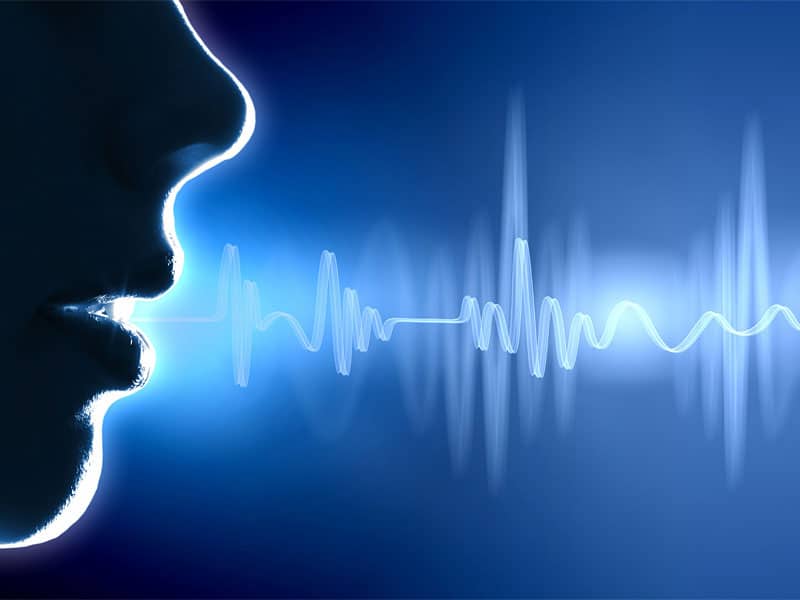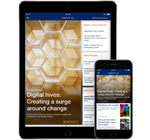Pattern Recognition
Speech Recognition

Handwriting recognition (or HWR) is the ability of a computer to receive and interpret intelligible handwritten input from sources such as paper-documents, photographs, touch-screens and other devices. The image of the written text may be sensed "off line" from a piece of paper by optical scanning (optical character recognition) or intelligent word recognition. Alternatively, the movements of the pen tip may be sensed "on line", for example by a pen-based computer screen surface, a generally easier task as there are more clues available.Speech recognition (SR) is the inter-disciplinary sub-field of computational linguistics which incorporates knowledge and research in the linguistics, computer science, and electrical engineering fields to develop methodologies and technologies that enables the recognition and translation of spoken language into text by computers and computerized devices such as those categorized as smart technologies and robotics. It is also known as "automatic speech recognition" (ASR), "computer speech recognition", or just "speech to text" (STT).
Speech recognition applications include voice user interfaces such as voice dialing (e.g. "Call home"), call routing (e.g. "I would like to make a collect call"), domotic appliance control, search (e.g. find a podcast where particular words were spoken), simple data entry (e.g., entering a credit card number), preparation of structured documents (e.g. a radiology report), speech-to-text processing (e.g., word processors or emails), and aircraft (usually termed Direct Voice Input).
The term voice recognition or speaker identification refers to identifying the speaker, rather than what they are saying. Recognizing the speaker can simplify the task of translating speech in systems that have been trained on a specific person's voice or it can be used to authenticate or verify the identity of a speaker as part of a security process.
From the technology perspective, speech recognition has a long history with several waves of major innovations. Most recently, the field has benefited from advances in deep learning and big data. The advances are evidenced not only by the surge of academic papers published in the field, but more importantly by the world-wide industry adoption of a variety of deep learning methods in designing and deploying speech recognition systems.
Applications
In-car systems
Typically a manual control input, for example by means of a finger control on the steering-wheel, enables the speech recognition system and this is signalled to the driver by an audio prompt. Following the audio prompt, the system has a "listening window" during which it may accept a speech input for recognition.
Simple voice commands may be used to initiate phone calls, select radio stations or play music from a compatible smartphone, MP3 player or music-loaded flash drive. Voice recognition capabilities vary between car make and model. Some of the most recent car models offer natural-language speech recognition in place of a fixed set of commands. allowing the driver to use full sentences and common phrases. With such systems there is, therefore, no need for the user to memorize a set of fixed command words.
Health care
Medical documentation
In the health care sector, speech recognition can be implemented in front-end or back-end of the medical documentation process. Front-end speech recognition is where the provider dictates into a speech-recognition engine, the recognized words are displayed as they are spoken, and the dictator is responsible for editing and signing off on the document. Back-end or deferred speech recognition is where the provider dictates into a digital dictation system, the voice is routed through a speech-recognition machine and the recognized draft document is routed along with the original voice file to the editor, where the draft is edited and report finalized. Deferred speech recognition is widely used in the industry currently.
Therapeutic use
Prolonged use of speech recognition software in conjunction with word processors has shown benefits to short-term-memory restrengthening in brain AVM patients who have been treated with resection. Further research needs to be conducted to determine cognitive benefits for individuals whose AVMs have been treated using radiologic techniques.
Military
High-performance fighter aircraft
Speech recognizers have been operated successfully in fighter aircraft, with applications including: setting radio frequencies, commanding an autopilot system, setting steer-point coordinates and weapons release parameters, and controlling flight display.
Usage in education and daily life
For language learning, speech recognition can be useful for learning a second language. It can teach proper pronunciation, in addition to helping a person develop fluency with their speaking skills.
Students who are blind (see Blindness and education) or have very low vision can benefit from using the technology to convey words and then hear the computer recite them, as well as use a computer by commanding with their voice, instead of having to look at the screen and keyboard.
Students who are physically disabled or suffer from Repetitive strain injury/other injuries to the upper extremities can be relieved from having to worry about handwriting, typing, or working with scribe on school assignments by using speech-to-text programs. They can also utilize speech recognition technology to freely enjoy searching the Internet or using a computer at home without having to physically operate a mouse and keyboard.
Speech recognition can allow students with learning disabilities to become better writers. By saying the words aloud, they can increase the fluidity of their writing, and be alleviated of concerns regarding spelling, punctuation, and other mechanics of writing. Also, see Learning disability.
Voice Recognition Software's use, in conjunction with a digital audio recorder, a personal computer and Microsoft Word has proven to be positive for restoring damaged short-term-memory capacity, in stroke and craniotomy individuals.
People with disabilities
People with disabilities can benefit from speech recognition programs. For individuals that are Deaf or Hard of Hearing, speech recognition software is used to automatically generate a closed-captioning of conversations such as discussions in conference rooms, classroom lectures, and/or religious services.
Speech recognition is also very useful for people who have difficulty using their hands, ranging from mild repetitive stress injuries to involve disabilities that preclude using conventional computer input devices. In fact, people who used the keyboard a lot and developed RSI became an urgent early market for speech recognition. Speech recognition is used in deaf telephony, such as voicemail to text, relay services, and captioned telephone. Individuals with learning disabilities who have problems with thought-to-paper communication (essentially they think of an idea but it is processed incorrectly causing it to end up differently on paper) can possibly benefit from the software but the technology is not bug proof. Also the whole idea of speak to text can be hard for intellectually disabled person's due to the fact that it is rare that anyone tries to learn the technology to teach the person with the disability.
This type of technology can help those with dyslexia but other disabilities are still in question. The effectiveness of the product is the problem that is hindering it being effective. Although a kid may be able to say a word depending on how clear they say it the technology may think they are saying another word and input the wrong one. Giving them more work to fix, causing them to have to take more time with fixing the wrong word.
Further Applications
Aerospace (e.g. space exploration, spacecraft, etc.) NASA’s Mars Polar Lander used speech recognition from technology Sensory, Inc. in the Mars Microphone on the Lander
Automatic subtitling with speech recognition
Automatic translation
Court reporting (Realtime Speech Writing)
Hands-free computing: Speech recognition computer user interface
Home automation
Interactive voice response
Mobile telephony, including mobile email
Multimodal interaction
Pronunciation evaluation in computer-aided language learning applications
Robotics
Speech-to-text reporter (transcription of speech into text, video captioning, Court reporting)
Telematics (e.g., vehicle Navigation Systems)
Transcription (digital speech-to-text)
Video games, with Tom Clancy's EndWar and Lifeline as working examples
.


 Facebook
Facebook Twitter
Twitter LinkedIn
LinkedIn Google
Google